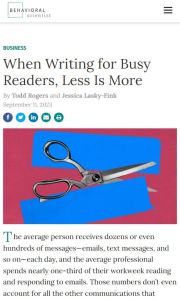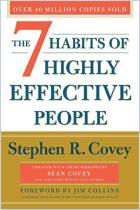
Recommendation
Have you read Tolstoy’s War and Peace? Have you tackled Proust’s In Search of Lost Time? How about Cervantes’s Don Quixote or Joyce’s Ulysses? It doesn’t take a genius to work out why so many people struggle to complete these epic classics: Long texts are daunting. This is as true of an email as it is of a historical novel. Scholars Todd Rogers and Jessica Lasky-Fink underline the importance of brevity in writing. If you want to maximize your messages’ reach and effectiveness, read their concise advice.
Summary
About the Authors
Todd Rogers is a professor of public policy at Harvard University. He teaches communicators how to write better for busy audiences. Jessica Lasky-Fink is the research director at the People Lab. She applies insights from behavioral science to improve the delivery of government services and programs. Rogers and Lasky-Fink co-wrote Writing for Busy Readers.















Comment on this summary